The month of Kartika is in the name of Kumar Kartikeya, son of Mahadev and commander of the army of gods. He is the only God who has been given one month in 12 months. This month is considered to be the most auspicious and sacred for all Hindus. On the occasion of Kartika Purnima, Lord Shiva and Lord Vishnu are worshiped along with Kumar Kartikeya all over the country. And we Odias knew that there’s always any linkages of every festival with Jagannatha and this is called Panchuka Brata. The last five days of the Kartika month is considered highly auspicious and is known as ‘Panchuka’. It is a practice among Odias to give up non-vegetarian food such as fish, meat and egg during the entire month. However, those who are not in a position to abstain from non-vegetarian foods during the entire month, have the option to give it up for five days beginning from Panchuka. There is a popular proverb in Odia which says that ‘even the fish-hunting bird crane does not touch fish during these five days.’

But excluding this festival, there’s a unique tradition is followed in our state of Odisha, which is called ‘Boita Bandana’ on Kartika Purnima day. And the history behind this tradition is about 2500 years old, glorious saga and complete bravery heroic stories of our ancestors. Here Boita means an argosy or a large sail boat and bandana is worshipping with lighted lamp.
By the end of the second century BC, Indian mariners appear to have learned enough about the monsoon winds and ocean currents to attempt a more southern route across the Indian Ocean to the islands of Indonesia. Odisha’s Lake Chilika was an important starting point for this voyage.

In the 2nd century AD, Palur was an essential port in Odisha. Back then, what is now the state of Odisha was a part of the Kalinga state, ruled by Emperor Ashoka and trade with China, Rome and countries in South East Asia was flourishing. Bali had spices, pearls gems, silk, camphor, beeswax and sandalwood to offer to the Kalinga traders and the Indian traders travelled for months on end to obtain these.
Note that the ships did not sail out directly for Indonesia. Instead, they used the north-eastern monsoon winds that blow from mid-November to sail down the coast to Sri Lanka.
This was already a well-known route, and the merchants probably stopped along the way to trade as well.
In Sri Lanka, the ships would have taken in fresh water and supplies before using ocean currents to cross the Indian Ocean to the northern tip of Sumatra (called Swarnadwipa or Island of Gold in Sanskrit texts). From here, the ships could choose to sail down the Straits of Malacca towards Palembang and take the sea route to Borneo and Vietnam. Alternatively, they could head south hugging the western coast of Sumatra to Bali and Java (called Yavadwipa, or Island of Barley/Grain).

In olden days the ‘Sadhabas’ (Sea traders of Odisha) used to sail off to distant islands like Java, Sumatra, Bali, Indonesia, Singhala (Sri Lanka) etc. for their trade by huge boats. Those boats are called as Boita. The sailors used to set sail in the Asadha month (of Odia calendar, rainy season) and come back by the Baisakha month (summer season). That’s why a ritual song also simultaneously murmuring as:
“Aa Kaa Maa Bai, Paana Gua Thoi, Paana Gua Tora Maasaka Dharama Mora”
Aaa (Aasadha), Kaa (Kartika), Maa(Maargasira), Bai (Baisakha)
….with the boating festival when the hand made boat float.
[There is also an interesting but different opinion on this months, Here, Aa-Ka- Ma-Bai connotes the month of Asadha, Kartika, Margasira and Baisakha. While the period from Asadha to Kartika (July – September) was the season of outgoing voyage and Magha to Baisakha was considered to be the season of return voyage. Tap]
Women from the families of the traveling sailors used to perform rituals for the safe journey of the boats, which was called as Boita Bandana (Worship of the Boats). Cuttack’s Bali-Jatra is based on that history.
History of this Tradition

In different intervals of times this kingdom is known as Kalinga, Udra, Kangoda and Utkala. This state has on its peak in every where during the tenure of Mahameghabahan Aira Kharavela. During that time the vast seashore of our state is acted as natural ports for our Sadhabas. These costlines are connected through rivers like Mahanadi, Brahmani, Subarnarekha, Bansadhara, Budhabalanga and Rushikulya. And the then towns of Cuttack, Balasore, Jaleswar, Jajpur, Chandbali, Sambalpur, Sonepur were acted as the prominent points for the business through the water body. Our mariners do collection of different types of articles, spices, pearls gems, sarees, camphor, beeswax and sandalwood, elephants’ tooth, beetel leafs, gold and silver ornaments etc. and bring them to the ports through the above mentioned rivers. Then they do start their journey to foreign countries by Boitas (boats). After reaching, they do exchange those items in respective countries and import many times from there like Chinapot, Silk clothes etc.
This rich maritime culture is very old than the tenure of Emperor Kharavela. The renowned historians proved that this culture started in 6th BCE and existed to 16th-17th CE. But this business has on its peak during the age of Kharavela, so the Bay of Bengal known as the Kalinga Sagara at that time.

The famous travellers like Plining (Greek, 1st CE), Tolemy (Greek, 2nd CE), Fahian (China, 4th CE) and Huensan (China, 7th CE) plotted about this maritime culture of Kalinga on their respective books. We can trace more about this from the ancient Greek book ‘The Perilous: The Erithraen Sea’ and from our famous mid-aged Indian books like Kautilya’s Arthasashtra and Kalidas’s Raghuvansam.
From the above scholars found that our marinners spread their business in East-South of Brahmadesh, Indonesia (Bali, Java, Borneo, Sumatra), Thailand, Kambodia, Malaysia, Japan and Srilanka with West Arab countries and East African countries.
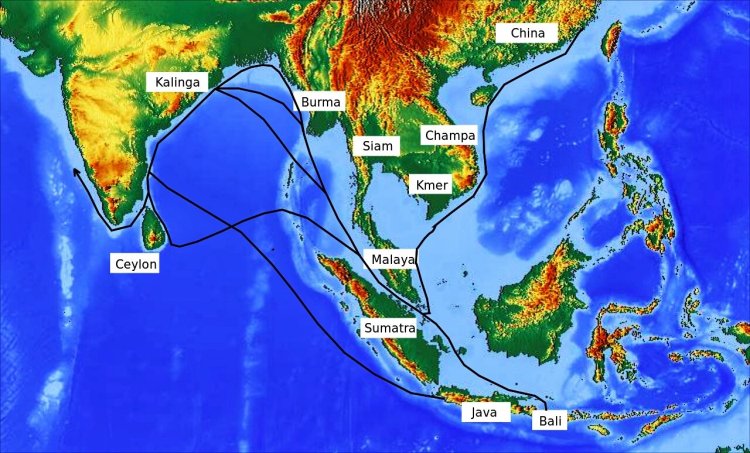
The Kings of ancient Kalinga were masters in the making of Boitas (boats) and Potas (submarines). It is still astonishing to many, that how they do their journey so far on boats with carrying such a heavy amount of commodities while they don’t have any modernized boats, don’t aware of compasses to detect direction and don’t have anything to predict the current weather conditions!
It is written in Srilankan Buddhist scripture ‘Datha Dhatubansha‘ that the Boitas of Kalinga is strong and durable. And the then ancient poet Dinakrushna Das stated about the making style of Kalingan Boats in his ‘Prastabasindhu’ book:
“ସେ ଲୁହା କଟଇ କରପେଟା
ନାବ ଖଞ୍ଜିବାକୁ ଗଢ଼ଇ କଣ୍ଟା।
ଦୁଇ ଖଣ୍ଡ ପଟା ଭିତରେ ପଶେ
ଯେସନ ନାରାଚ ଦେହରେ ବସେ।”
The famous Greek traveller Tolemy wrote about some ports which are in the coastline of ancient Kalinga in his book naming: NanigaNia (Puri), Katikardamå (Cuttack) and Kannagarå (Konarka). According to the historians; Kalingapattanam (Srikakulam, AP), Pithunda (Krushna, AP), Koshambå (Balasore), TiLas (Brahmani), Dosaran (Baitarani), Ādams (Subarnarekha), Tamralipta (Tamalu Kå), Pakula (Ganjam), Chelitolå (Chitrotpala), Dantåpuri, Palora (Palur), Pipili, Dhamara, Gopalpur and Chillika are the famous ports of that time in Kalinga.
Our Sadhabas not only going there to do their own business, they’re also spreading our rich culture and religion in foreign countries. They’re the ones who spread Buddhism and Jagannath culture in South Asia. Many from our Sadhabas were nestled their and now the permanent residents of Java. They are now known as ‘Kling’. Some of them became the ruller of the Brahmadesh (Myanmar) on 7th CE, the Brahmadesh then known as ‘Kalingåratå or Kalingaraahtra’ and the Promnagari was known as ‘Shreekhetra’.
This rich history fell from its peak during in the early of 13th CE. Our ancestors found it difficult to take over the throne there due to repeated foreign invasion and political instability due to it. And lost their economic status by being repeatedly tempted by pirates. However, as soon as 17 was CE, save your empire. Then Kalinga became a victim of the fraud of the British and submerged its ancient tradition.

★ Bali-Jatra (voyage to Bali). On the shores of the Mahanadi, near the Barabati fort, the large open fair, which is one of the biggest fair in Odisha, marks the day ancient seafarers left for the distant shores of Bali, Java and Sumatra in Indonesia for trade.
The days are now gone, but the memory is still alive. Now, people celebrates this festival by floating tiny boats (made out of cork and coloured paper or bark of the banana tree) in different reservoir like pond, river etc. while reminiscing the past glory.

“Bhalkuni Osha” is a supplication ritual to Goddess Mangala to keep the sailing traders safe and also recounts a moving tale of life of the families when their men are away, “Aakash Deepa” ritual is a homage to the many small light houses that guided the trading sailors.

And some photographs of this festival.
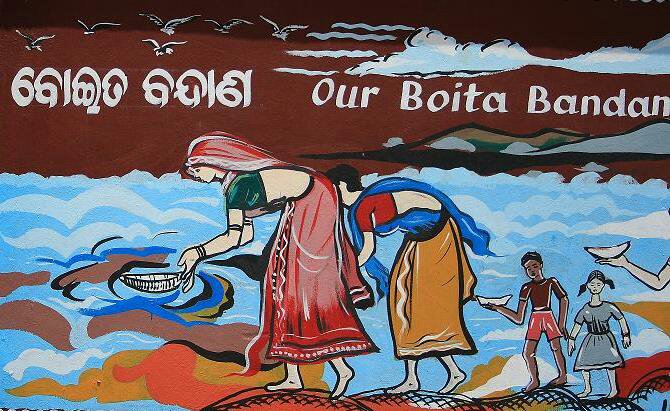



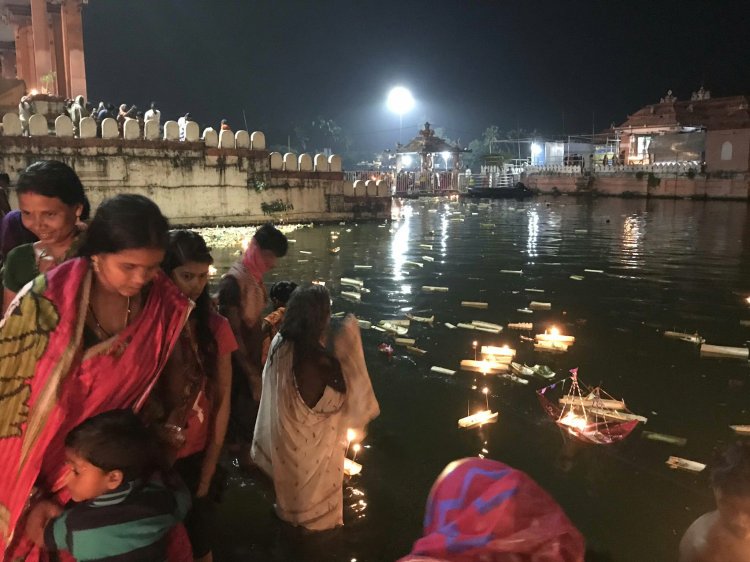

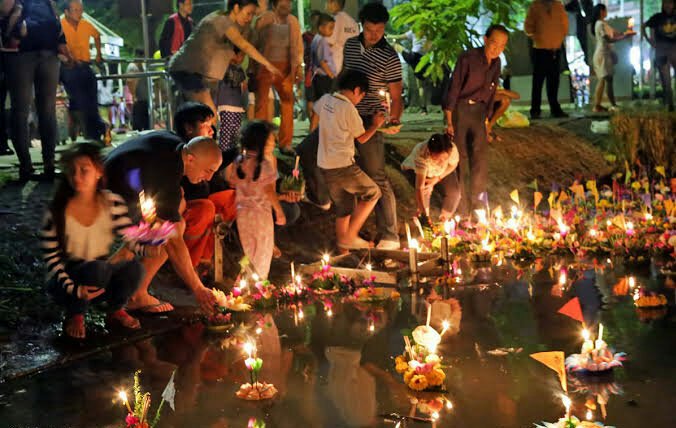
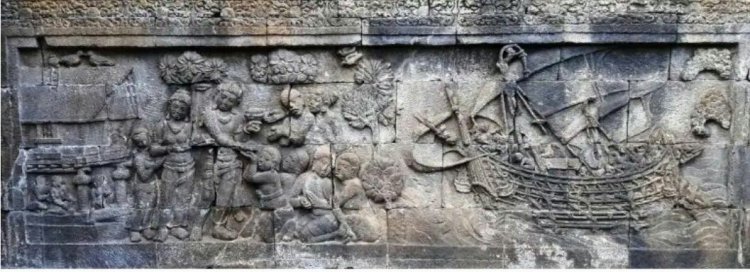
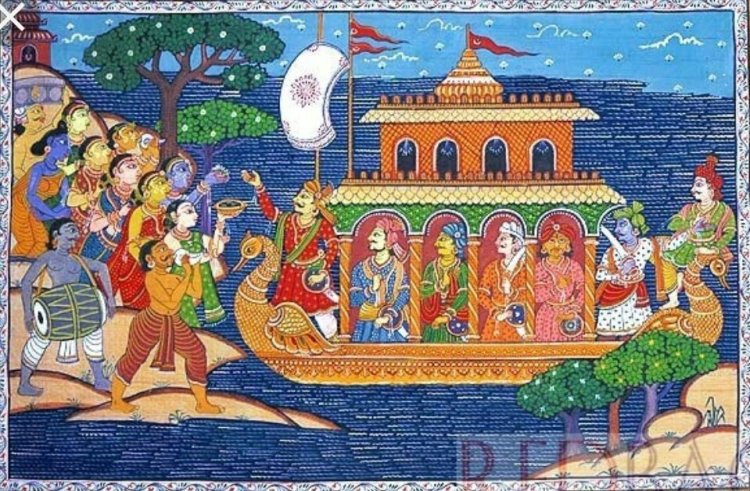



I found the post quite informative and interesting. Such a detailed and interesting article about Boita Bandana. I am giving a link to this article from my blog https://durgadash.com . Also I would like to use one of your photos in my blog post.
LikeLiked by 1 person
Sure 🙂
LikeLike